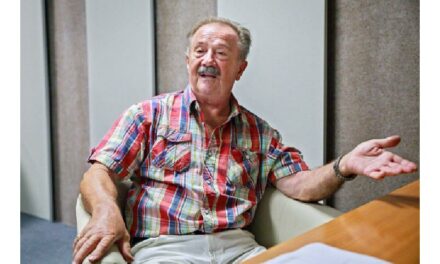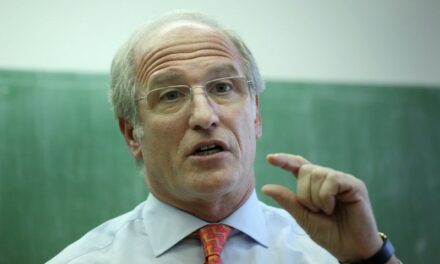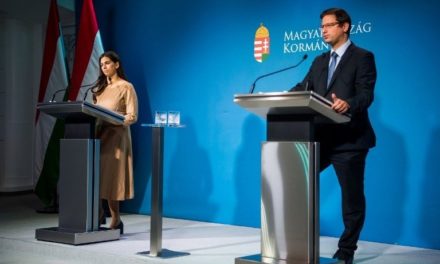Photo: György Palkó
I operate architecture in myself according to the laws of nature, because it is a much greater force than what a person would be able to control with his conscious energies, Ferencz Marcel, designer of the new Museum of Ethnography and head of Napur Architect, told Demokrat.
Details from the interview:
- It was his avowed goal to carry out an architectural act affecting all of humanity with the Museum of Ethnography. How can you tackle such a task?
– Not only I felt this way, but also the ten creators from among the world's architects who were invited to this competition. Not by chance, since we are talking about the catchment area of the national origin.
"Do you mean Heroes' Square?"
"That's what I call it, yes." That is why it is a pressing question, along which lines one should start during planning. Considering the immediate architectural environment? Up to date based on social and architectural trends? Already in 1997, when designing for the National Theater's Deák tér tender, I came to the conclusion that Budapest's frequented locations had to be thought of differently from the general contemporary architectural concept. We have a horribly twisted historical fate, and I believe that architecture can free us from the resulting burdens, and even open up a new dimension. When I visited the Museum of Applied Arts as a university student, walked around Hősök Square, and went up to Buda Castle, I felt that architecture and the natural environment together really affect the human spirit. This experience was deeply embedded in me.
– And in the end, along what lines did the Museum of Ethnography start?
– I defined three main ideas that are holding on to me. One is the infinite freedom that we are born with, with a sensitive soul, and I want to give this back to people so that they can see their lives and other people without shackles. The other direction is related to the fact that the task of the architect is to convey deep, inner, artistic experiences, since he also wants to experience this when he arrives somewhere. This must be translated into everyday language, so simplicity is an important element, so that what the visitor encounters is immediately clear. Don't be incomprehensible. The third direction is the opening of the horizon. The human spirit needs this, that's why climbers go to the mountain, that's why we go to the lake shore, the beach. These three intentions are also related, resulting in effects that follow one another. But this is still a small point of view for the building of the new Museum of Ethnography, as there is a huge matrix on its site, including the '56 monument as a gathering place for the nameless heroes, and the Heroes' Square, the national origin, which is the memory of our named kings, and here is also the entrance to the City Park. I believe that the '56 monument is a symbol through which the anonymous victims of the entire Hungarian history appear. These souls shape this place, which is why it is a saturated space where it is difficult to speak. And there is no architecture in the saturated space, and there can be no architecture, so I left the center of this green chalice like this, clean and untouched. There is such a space at the top of the pyramids, especially the truncated pyramids, where you really meet the Creator.
"So this is the top of a pyramid?"
"It's an inverted power formula." In the middle is the memorial site, from which the square unfolds. The two green arms metaphorically represent the sides of the pyramid, through which both the thought structures and the spirit move upward.
– Is it the task of the architect to feel and visualize the forces?
– There are question marks tied up in knots in the past, which are resolved in the present, and will exist freely in the future. The architect must be the master of forces, he must dissolve the blockages that reside in the past. But it doesn't matter how we liberate them, whether the process remains authentic for society, or whether we build a false world that is only born out of fashion. You must always be able to give an original answer, you must become shapers of the spiritual world. Here, at the Ethnographic Museum, the goal was to make this one-hectare area once again available to everyone. But in such a way that people ask themselves the big questions of their lives there, that is, individual historical energies dissolve in them in the same way. In this way, the individual, the population of the city, and in some cases the nation can heal. These are big words, but if I didn't believe in this, I wouldn't be able to dream of such a building.
"Why don't you like contemporary architecture?"
- Architecture has at least four thousand years of traditions with established laws of spatial formation, which serve society's rhythm, sense of proportion, and space requirements. This is a pure, inner source, which was still followed by the greats of our turn of the century. Change in the XX–XXI. century modernism, proclaiming that the individual should decide about the space. With this, he brought functionalism into our lives. When our ancestors built based on the ancient, magical space structure system, the individual had to adapt to the spaces of the building, and not the other way around. Today, this has become a "monument", we cannot practice the profession in this direction. However, in capital architecture, the space shapes the person, and he has to give up his current needs.
"But what do you get in return?"
"Elegance." You can fully surrender to an archaic space that lifts you back to the natural thought process, you can become part of the great universal whole that architecture has been able to carry for thousands of years. We should re-learn how to experience historical spaces, because the way of thinking it evokes could lead us in a strong, cohesive social direction.
– The Museum of Ethnography and the monument to the '56s are an interesting constellation together. On Index, city researcher Jamrik Levente called the building the entrance to hell, and it received a lot of negative criticism from the left. And the monument was surrounded by hatred from the right from the beginning. Now the two are crammed together in one place.
– The architect Tamás Dósa-Papp was once there with me at the construction site, he is one of the creators of the monument, by the way, a student of Makovecz. We talked about the falcon, the sacred bird of the Hungarians, and whether this house could even be a falcon with its beak, that is, the monument, and its two wings. It just flashed through our minds, but he pointed to the crane that was lifting huge concrete elements at the base of the monument and said: look, his name is Sólyom. At that time, we felt that we were small, what could we do if this hundred-ton crane was also working with a purpose, if something wanted to be born for the country. I say, I believe that there are no coincidences.
Source: Demokrata (Kristztina Fehérváry)












